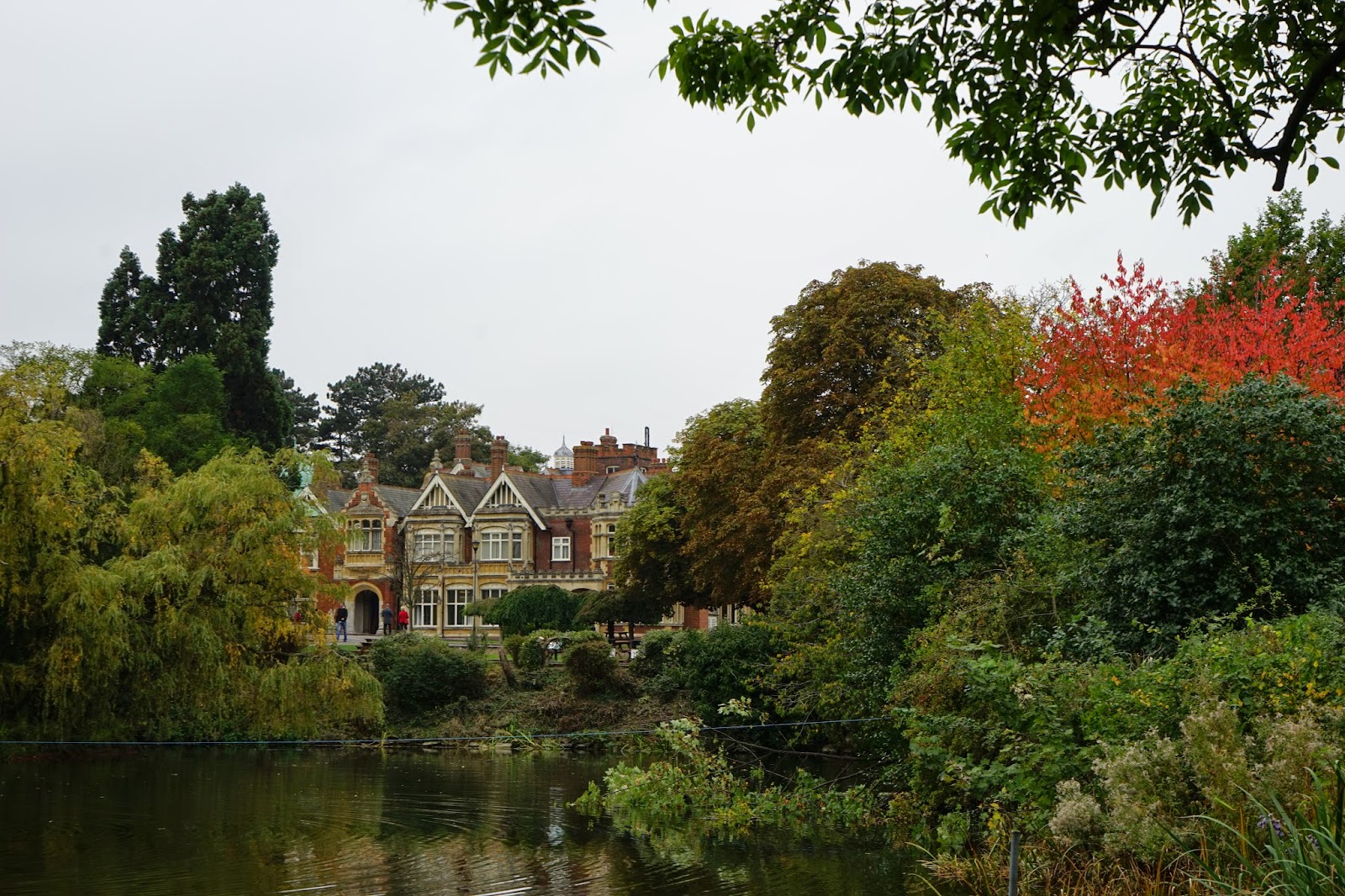I asked Ronnie to write a few words about our visit to Bletchley Park yesterday. He has watched many documentaries on this, so naturally knew much more than I did about it. Also, in studying the history of computer science, he has long heard of Alan Turing. It was quite sobering to think that the people who did this tediously detailed work at Bletchley Park actually shortened the WWII by at least 2 years and saved countless lives!
 |
| view of Main Mansion from across the lake |
(Ronnie) We took a day trip today to Bletchley Park, the home of the British code breakers during WWII. As some war secrets
have been made public, we learned more about the development of electronic
computers, algorithms and key people such as Thomas Flowers who invented
the Colossus computer used to break Lorenz encrypted communications.

Above sign reads: The most recognizable building on the site, the Mansion was built as a family home in the 1870's. The location was chosen for the government's secret code breaking work because Bletchley had good road and rail links and was halfway between the academic centers of Oxford and Cambridge. The Mansion housed the HQ offices and recreational areas.
"You walked into the Mansion and there was a mixture of Codebreakers, Wrens, anyone who worked there, and you had coffee and sat anywhere. You talked to anyone, high or low, but no one knew what anyone else was doing."
(Ronnie)
From my earliest days in computer science, I learned the contributions
of Alan Turing. I was able to sit in his
old office and imagine what it would have been like to work there. It
was a delight to see the old code breaking processes used to help defeat
the Nazis. The men and women working at Bletchley Park used their minds as weapons
and helped destroy the Third Reich.
 |
| Alan Turing's desk |
 |
| statue of Alan Turing |
 |
| German Lorenz cipher machine |
 |
| headquarters staff desk as it would have looked |
 |
| desks of director and staff |
I enjoyed the wartime museum. They did a good job of showing what it was like living in this country during the war. Most of the huts where the approximately 9,000 of men and women worked deciphering code have been restored and the desks have interactive screens that give visitors an idea of what it might have been like trying to handle the 3,000 messages they received daily.

For more on Bletchley Park,
click here.












No comments:
Post a Comment